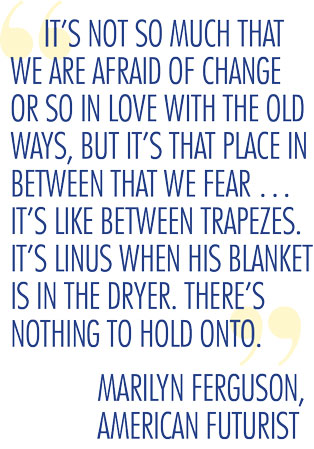In part one of this article, the concept of change was discussed. In a company environment when change is not handled appropriately, there can be a resistance due to the fear of the unknown. To avoid resistance, and issues with employee turnover and morale, choose to communicate change in a clear, understandable manner. Go the extra mile to ensure that your employees know what’s taking place, how it will affect them, and how the change will be implemented. In part two of this article, the focus is on Managing Change.

MANAGING CHANGE
The Management of Change (MOC) process was developed originally to manage change efforts as part of Process Safety Management (PSM). It is a best practice used to ensure that safety, health, and environmental risks are controlled when a company makes changes in their facilities, documentation, personnel, or operations. It was developed to:
- Motivate employees to communicate change requests using an intuitive user interface.
- Monitor and organize reviews, approvals, and other actions necessary to implement the change (i.e., update documentation, training materials, or master data).
- Use customized templates to decrease implementation and adoption costs.
- Ensure employees follow company/industry-specific change procedures to ensure safety compliance and reduce incidents.

The remarkable part of the MOC approach was the logical process it used to communicate change. In fact, far beyond the benefits of ensuring safety and environmental compliance, MOC is an effective means to announce any real change effort. There are numerous benefits to applying MOC as a communications tool:
- Increases awareness, approval, and motivation
- Increases acceptance rate and productivity
- Builds employee commitment
- Implements the appropriate role models and processes
- Builds organizational alignment and focus
- Strengthens and widens sponsorship
- Supports the people being asked to change
- Reduces risks of failure
It uses a SIX-STEP PROCESS (as shown in the slide images):
- Define the Opportunity: Define the purpose of the change
- Define the New Direction: Explain clearly and in general terms what is changing and why
- What is Unchanged: Share what is not changing so people understand
- What is Changed: Give specific details on what is changing
- Define Commitment and Next Steps: Describe what happens next and management’s commitment
- Contacts for Additional Information: Show who to contact for questions later
This proven process can and should be used in meetings, distributed as flyers, explained in newsletters, delivered one-on-one, and many other ways to get the message out. Consider a company meeting with a slideshow and handout with each step outlined in detail. Employees will then be able to ask questions to fully understand the change and have a take-away to refer to for added assurance of what’s taking place in the working environment. This can work in all types of business scenarios where change is recognized as a necessary progression to achieve better outcomes. ■
About the Author: Preston Ingalls is president and CEO of TBR Strategies, LLC, a Raleigh, North Carolina-based maintenance and reliability firm specializing in the construction and oil and gas industries. Preston can be reached at pingalls@tbr-strategies.com, or visit www.tbr-strategies.com.
_________________________________________________________________________
Modern Contractor Solutions – July 2016
Did you enjoy this article?
Subscribe to the FREE Digital Edition of Modern Contractor Solutions magazine.



